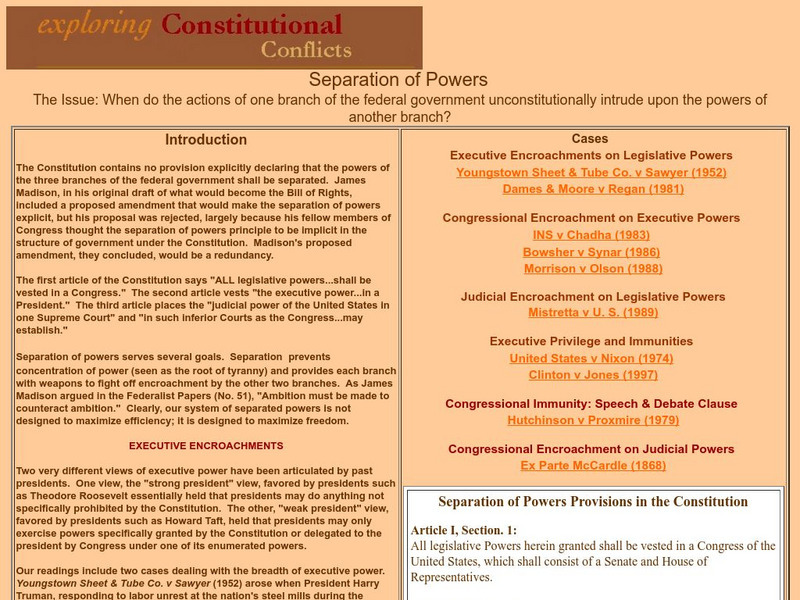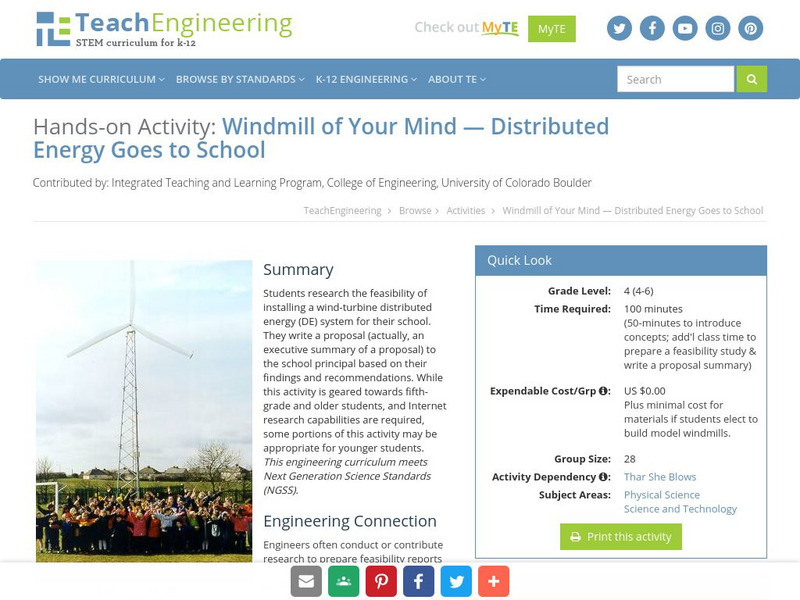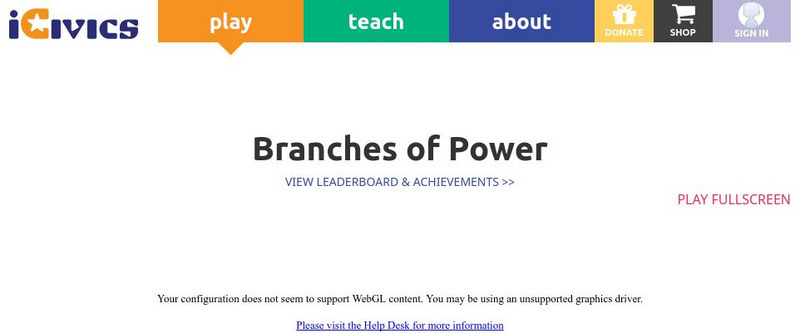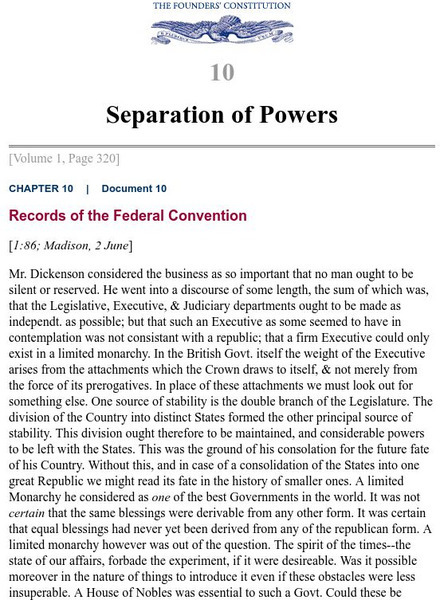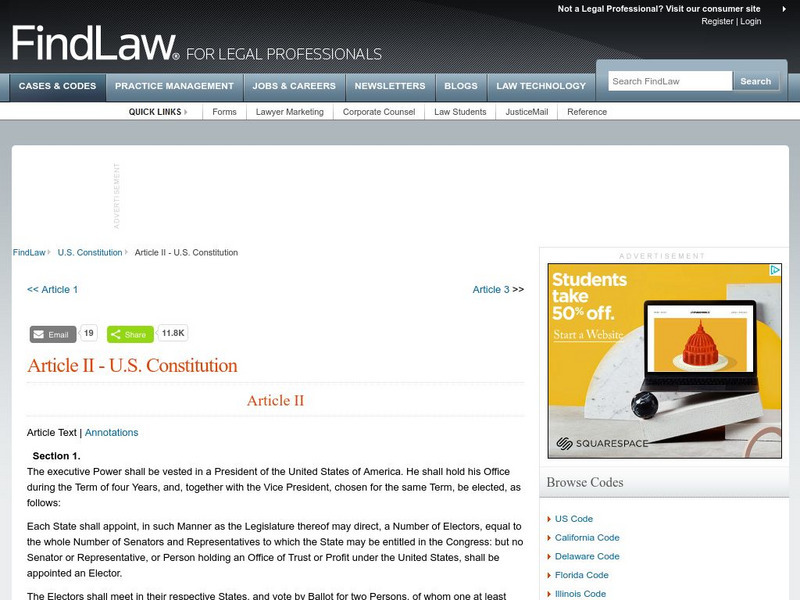US National Archives
National Archives: Lesson Plans Congress, the President, and the War Powers
Examine the power of Congress to make war by studying primary source documents from various wars throughout U.S. history. Students will analyze how the balance of authority between the legislative branch and executive branch has changed...
University of Missouri
Exploring Constitutional Conflicts: Separation of Powers
When do the actions of one branch of the federal government unconstitutionally intrude upon the powers of another branch? This article surveys the history of this question in historic Supreme Court cases.
This Nation
This nation.com: Executive Order 13132 of August 4, 1999
This Executive Order signed by President Bill Clinton on 8/4/99 is an order that describes the balance between state and federal governments, as warranted by the Framers of the Constitution and federalism.
Constitutional Rights Foundation
Constitutional Rights Foundation: Executive Branch: A Hero Betrayed: The Presidency of Ulysses S. Grant
Lesson with activity on the Executive Branch, distribution of power, scandal and the presidency of Ulysses S. Grant. Includes questions for discussion and class activity. Links to supplemental material.
TeachEngineering
Teach Engineering: Windmill of Your Mind: Distributed Energy Goes to School
Students research the feasibility of installing a wind-turbine distributed energy (DE) system for their school. They write a proposal (actually, the executive summary of a proposal) to the school principal based on their findings and...
Shmoop University
Shmoop: Executive Branch and Presidents
Basic information and key concepts about the Executive Branch and Presidents. Also available from the orange tabs on top: a few interesting stories on the history, a timeline that shows the development of the presidency, some quotes and...
PBS
Pbs Learning Media: The Powers of Government
Students learn how the three branches of the United States government work together and the powers that the Constitution assigns to each branch-legislative, executive, and judicial.
US National Archives
Docs Teach: Separation of Powers or Shared Powers
In this activity, learners will analyze documents that illustrate the relationship between the legislative, executive and judicial branches. Using the scale in Weighing the Evidence, students will decide whether the United States...
iCivics
I Civics: Branches of Power
Do you like running things? Branches of Power allows you to do something that no one else can: control all three branches of government! You'll have the power to write any laws you want about issues you choose. Careful, though, there's a...
A&E Television
History.com: How John Marshall Expanded the Power of the Supreme Court
When John Marshall was appointed chief justice of the U.S. Supreme Court in 1801, the nation's highest court occupied a lowly position. There was no Supreme Court Building in the newly completed capital, Washington, D.C., so the six...
Thomson Reuters
Find Law: Article Ii: Presidential Power to Use Troops
In-depth analysis of the use of presidential power to send troops abroad without consent of Congress.
University of Chicago
The Founders' Constitution: Separation of Powers
Federal Convention on the Separation of Powers as recorded during debate at the convention, June 2, 1787.
Yale University
Avalon Project: Constitution of the United States: Article Ii
Read the text of Article II of the Constitution, the four sections of which lay out the powers and duties of the executive branch of the federal government.
Thomson Reuters
Find Law: United States Constitution: Article Ii
Full text of Article II from the U.S. Constitution, as well as detailed annotations that explain the reasoning and subsequent impact of each clause and section of the Article. Content explores everything from the nature and scope of...
Wikimedia
Wikipedia: President of the United States
This is a comprehensive article on the presidency of the United States. Learn about the history of this office, its responsibilities and its powers.
Annenberg Foundation
Annenberg Learner: Democracy in America: The Modern Presidency: Tools of Power
This unit details how the role of the President of the United States has evolved to the position it is today since the ratification of the U.S. Constitution. Offers video, readings, web resources and activities.
iCivics
I Civics: Games: Branches of Power
Interactive and educational game puts players in control of all three branches of government and tests their abilities to turn issues of concern into full-fledged laws.
iCivics
I Civics: Separation of Powers: What's for Lunch?
Learners find out how the three branches of government interact with each other and how decisions about laws are made by several parts of the U.S. government.
Thomson Reuters
Find Law: u.s. Constitution: Article Ii: Powers and Duties of the President
This resource provides the annotation on Section 2, Clause 1 of the United States Constitution., which outlines the President's responsibilities as Commander-in-Chief.
US Mint
United States Mint: Branches of Power
Save the federal government from Oppressor Sam, and learn about the US Constitution to restore the three branches of government.
Center For Civic Education
Center for Civic Education: What Is the Role of the President?
The president has great power granted to him under Article II of the Constitution, while at the same time extensive limits have been placed to keep that power in check. This source contains extensive background on these powers and...
Thomson Reuters
Find Law: Annotation 3: Article I
This resource provides the annotation of Article 1 of the Constitution and the powers held by Congress. Focuses are on the implied, enumerated, inherent, and resulting powers of Congress. At the bottom of the page footnotes are provided.
American Bar Association
American Bar Assoc.: Separation of Powers, Connecting the Separate Powers [Pdf]
This lesson involves role-playing to help the students understand the separation of powers. [PDF]
CommonLit
Common Lit: Courage in Denmark: Resistance to the Nazis in Wwii by Us Holocaust
World War II (WWII), a global conflict that lasted from 1939 to 1945 involved more than 100 million people and over 30 countries. The Allied powers - including the United States, the United Kingdom, and the Soviet Union - worked together...



